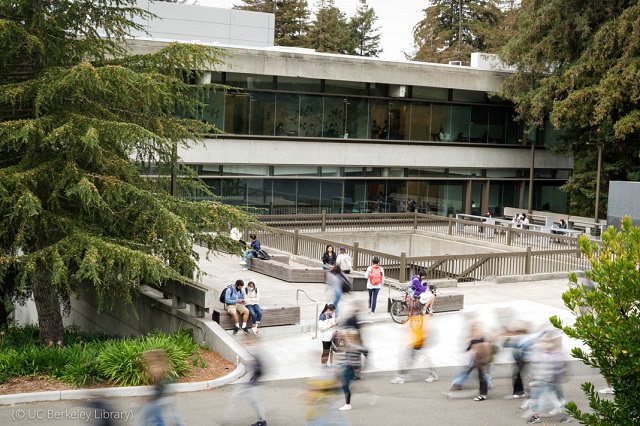A generation of blind innovators in the United States began their journey to success from inside a “cave.”
While the University of California, Berkeley called the place a blind students’ study center, those who used the basement-level room inside Moffitt Library called it The Cave.
Combining cramped space, old furniture and the smell of coffee and books, the center earned its nickname.

“The Cave” was in the basement of Moffitt Library on the University of California, Berkeley campus. (© UC Berkeley Library)
“It’s where the bats hung out,” Joshua Miele, one of several students who studied there in the late 1980s, told STAT, a media company produced by Boston Globe Media.
For Miele, a physics major, his innovation journey began there. The Cave provided a sense of community and value for Miele and other blind students before the 1990 Americans with Disabilities Act prohibited discrimination in public facilities.
Technology spurred creativity
Students had keys to the center so they could study at all hours while they explored new ideas. A main draw: a wide array of special technology not easily found elsewhere.
The blind students could type search terms into a talking computer terminal that would then read them books, articles and other materials from the library’s catalogs and databases. This was all years before easy access to the internet.
Miele and another Cave alumni, Marc Sutton, later worked together on the Berkeley Systems screen reader outSPOKEN.
Today, Miele develops devices for blind and visually impaired individuals to use, such as tactile street maps. He won a 2021 MacArthur Foundation fellowship, often called genius grants, for his work as a technology designer.
Sutton works for Apple Inc. identifying software bugs and designing solutions that enable blind people to use smartphones and computers.

From left: Bryan Bashin, Lori Gray, Thomas Foley and Joshua Miele (© Lighthouse for the Blind and Visually Impaired; © BORP; © National Disability Institute; © James A. and Catherine T. Foundation)
Both Miele and Sutton are among innovators and changemakers who studied in The Cave. Others include:
- Bryan Bashin, chief executive of San Francisco’s LightHouse for the Blind and Visually Impaired and a member of the U.S. AbilityOne Commission, which works with federal contractors to employ persons who are blind or have other disabilities.
- Lori Gray, a program manager at the Bay Area Outreach and Recreation Program in Berkeley, which offers recreational activities to persons with disabilities.
- Thomas Foley, executive director of the National Disability Institute in Washington, which promotes competitive integrated employment and helps persons with disabilities reach financial security.
- Fatemeh Haghighi, a professor of neuroscience at the Icahn School of Medicine at Mount Sinai in New York City.
Miele said his time at UC Berkeley was when “I began to understand that I was part of an enormous, and enormously cool, community of people with a history, cultural context, and wealth of identities. I consider myself deeply connected with the rich Berkeley disability community.”







COMMENTS0
LEAVE A COMMENT
TOP